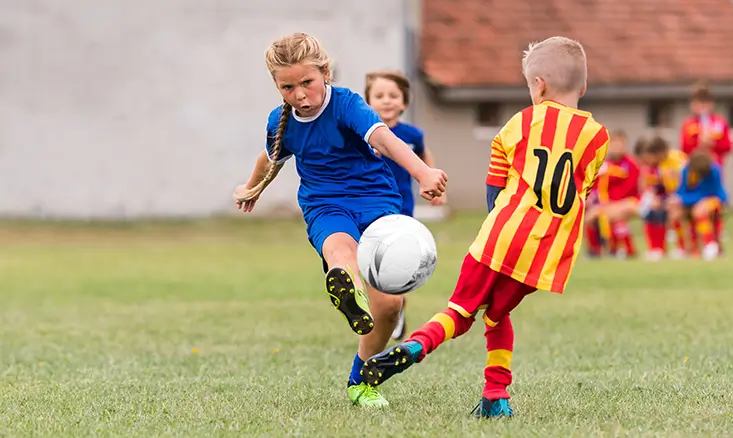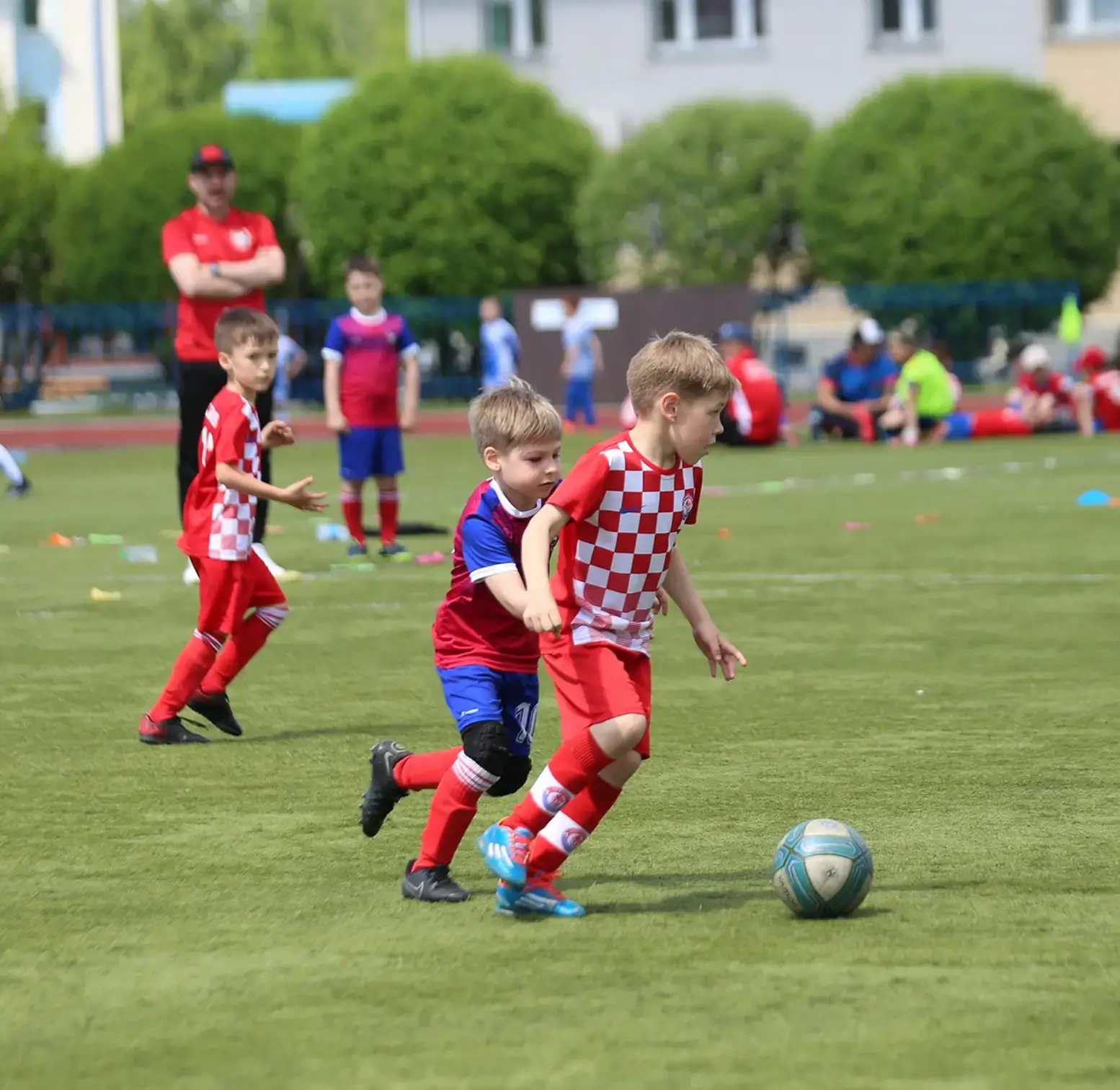CRFC BLOGS
LATEST BLOGS & NEWSLETTERS
Youth Soccer Positions: Understanding Your Role on the Field
In youth soccer, understanding soccer positions is crucial for both individual and team success. Whether your child is playing in a 7v7, 9v9, or 11v11 formation, knowing where to position themselves is vital for effective gameplay. This article will walk you through the main youth soccer positions, explain the responsibilities of each role, and provide tips to help players excel in their positions.
Why Soccer Positions Are Important
Understanding youth soccer positions is fundamental to creating an organized team. When each player knows their role, it improves the overall performance of the team. Whether it’s a defender blocking a shot, a midfielder controlling the pace of the game, or a forward looking to score, knowing your position enables every player to contribute effectively.
Proper positioning ensures:
- A well-organized defense and attack
- Players understand their roles and how to contribute to the team’s strategy
- The team can react quickly to changing situations on the field
Now, let’s dive into the key soccer positions for youth players.

The Key Youth Soccer Positions
In youth soccer, the main positions include goalkeeper, defenders, midfielders, and forwards. Each position plays a unique role, contributing to both offense and defense. Here’s an overview of each:
Goalkeeper (Keeper or Goalie)
The goalkeeper is perhaps the most specialized position on the field. They are responsible for protecting the goal and preventing the opposing team from scoring.
Key responsibilities:
- Blocking shots and making key saves
- Clearing the ball when necessary
- Communicating with defenders to organize the defense and keep control of the game
A goalkeeper must have quick reflexes, excellent decision-making, and the ability to stay calm under pressure.
Defenders
Defenders are the backbone of the team, tasked with protecting the goal and stopping the opponent’s forwards from scoring. They must be quick on their feet, disciplined in their positioning, and aware of the game around them.
Key positions within defense:
- Center Back (Central Defender): The center back is positioned centrally and is responsible for preventing any through passes and tackling forwards.
- Fullbacks (Left and Right): Fullbacks play on the flanks and are responsible for defending against wingers while also supporting the attack by moving forward and crossing the ball into the attacking zone.
A good defender must anticipate the opposing team’s moves and work closely with their goalkeeper to maintain a strong defense.
Midfielders: The Heart of the Team
Midfielders are crucial as they control the pace of the game, distribute the ball, and often have both offensive and defensive responsibilities.
Key roles of midfielders:
- Central Midfielders: Positioned in the middle of the field, central midfielders dictate the tempo of the game, distributing the ball and setting up attacks.
- Attacking Midfielders: Positioned closer to the forwards, they create scoring opportunities by providing key passes.
- Defensive Midfielders: These players act as a shield for the defense, intercepting passes and disrupting the opponent’s attack.
Midfielders are often required to be versatile, switching between attacking midfielder and defensive midfielder based on the flow of the game.

Forwards and Strikers: The Goal Scorers
Forwards and strikers are the primary goal-scoring players. They are positioned near the goal and are responsible for creating and finishing scoring chances.
Key responsibilities:
- Striker (Center Forward): A striker is the primary goal scorer. They are typically positioned the furthest up the field and need to make quick, decisive runs to get in front of the goal and finish scoring chances.
- Forwards: Forwards assist the striker by providing support and creating goal-scoring opportunities. They are often in motion, looking to create space and provide crosses.
Both positions require quick decision-making, excellent positioning, and the ability to capitalize on scoring chances.
Soccer Formations and Positioning
A team’s soccer formation defines how players are positioned on the field. The formation used influences the game strategy, whether focused on defense, possession, or attacking. Understanding how positions work within different formations is essential for players of all positions.
Popular Youth Soccer Formations
- 4-4-2 Formation: This classic formation has 4 defenders, 4 midfielders, and 2 forwards. It provides a balanced approach with a strong defense and two attackers. If you’re curious about how to use this formation in youth soccer, check out Youth Soccer 4-4-2 Formation.
- 4-3-3 Formation: This formation focuses on attacking with 3 forwards, 3 midfielders, and 4 defenders. It is often used when a team wants to control possession while maintaining enough defense to counteract opposing attacks. Learn more about Youth Soccer 4-3-3 Formation.
- 4-3-2-1 Formation: This formation is commonly used in situations where defense needs to be prioritized while maintaining a focus on counter-attacking. It features 4 defenders, 3 midfielders, 2 attacking midfielders, and 1 striker. Discover how this formation works for youth teams with Youth Soccer 4-3-2-1 Formation.
- 4-3-1-2 Formation: Similar to the 4-3-2-1 but with a more compact midfield, this formation can give more control in the center of the field. Learn more about how to utilize this formation in youth soccer with Youth Soccer 4-3-1-2 Formation.
- 3-5-2 Formation: A more attacking formation, this setup has 3 defenders, 5 midfielders, and 2 forwards. It’s designed for teams that want to dominate the midfield and launch attacks quickly. Explore how this formation works with Youth Soccer 3-5-2 Formation.
- 3-4-3 Formation: Often used in more competitive settings, this formation places a heavy emphasis on offense with 3 forwards, 4 midfielders, and 3 defenders. It’s ideal for teams looking to pressure the opposing defense with speed. Find out more about this setup with Youth Soccer 3-4-3 Formation.
- 4-2-3-1 Formation: This is a balanced formation with 4 defenders, 2 defensive midfielders, 3 attacking midfielders, and 1 striker. It is often used to give teams flexibility in both defense and attack. Check out how this formation benefits youth soccer teams in Youth Soccer 4-2-3-1 Formation.

How Coaches Guide Players in Their Positions
A soccer coach plays a key role in helping players understand their position. Here’s how coaches help players improve:
Clarifying Roles and Responsibilities
Coaches ensure that players understand their role in the team, emphasizing each position’s responsibilities during games. They teach players how to stay focused and how their role contributes to the team’s strategy.
Encouraging Versatility
In youth soccer, flexibility is important. Coaches often rotate players through different positions to give them a well-rounded understanding of the game. This helps players become more adaptable and improves their overall soccer IQ.
[Read more about how tactical awareness can help players understand the game better in Tactical Awareness Improves Youth Soccer Players
FAQs About Youth Soccer Positions
What are the basic positions in youth soccer?
The basic positions in youth soccer are goalkeeper, defenders, midfielders, and forwards. Each of these positions has specific roles and responsibilities that help the team function effectively both in attack and defense.
How can I improve my performance in my soccer position?
Improving performance in any position requires focused practice on the skills specific to that role. For example, forwards should focus on finishing, dribbling, and movement off the ball. Defenders should work on positioning, tackling, and anticipating passes. Regular training and position-specific drills can help a player become more effective in their role.
Can a player play multiple positions in soccer?
Yes, it is very common in youth soccer for players to rotate through different positions. This flexibility helps players understand various aspects of the game and develop a well-rounded soccer IQ, making them valuable assets to the team.
What is the role of a coach in positioning players?
A soccer coach plays a crucial role in teaching players their positions. They guide players on where to be on the field, the responsibilities tied to each position, and how to work together as a team. Coaches also help players understand their strengths and place them in the best position to succeed.
How do I know which position is best for my child?
The best position for your child depends on their skill set, strengths, and natural inclinations. For example, if your child excels in making quick, strategic decisions and has good stamina, they might thrive as a midfielder. If they have excellent reflexes and agility, the goalkeeper might be a good fit. Coaches can assess your child’s abilities and recommend the most suitable position.
Is it okay for my child to play a different position than usual?
Yes, youth soccer teams often rotate players through different positions to develop their skills. It helps them understand the game from all perspectives and improves their overall soccer IQ. However, it’s important to ensure that your child feels comfortable in the position and enjoys playing it.
What is the difference between a forward and a striker?
In soccer, forwards and strikers both play close to the opponent’s goal, but there’s a slight difference in their roles. Strikers are often the central players who focus on scoring goals and finishing attacks. Forwards, on the other hand, may have a slightly more flexible role, assisting in goal-scoring while also creating space and opportunities for other players.
How do formations affect youth soccer positions?
Different soccer formations (e.g., 4-4-2, 4-3-3) dictate how players are positioned on the field. For example, in a 4-4-2 formation, you’ll typically have 4 defenders, 4 midfielders, and 2 forwards. Each formation impacts the responsibilities of each player, and coaches decide on formations based on the team’s strengths and the tactical approach they want to take.
What positions are most important for a youth team to succeed?
Every position plays a role, but goalkeepers, defenders, and midfielders are especially crucial to the success of a youth team. The goalkeeper keeps the team from conceding goals, while defenders protect the goal and midfielders control the game’s flow. Forwards are essential for scoring, but the teamwork between all positions is what ultimately makes a team successful.
Conclusion Mastering Your Position in Youth Soccer
Understanding youth soccer positions is essential for every player’s development. Whether you’re a goalkeeper, midfielder, defender, or forward, knowing your role on the field helps you contribute effectively to your team’s success.
At Charlotte Rise FC, we focus on developing each player’s skills in their respective soccer positions, helping them grow both as individuals and as part of a team. Ready to take your game to the next level? Join Charlotte Rise FC today and let our expert coaches help your child excel in their soccer position!
Join Charlotte Rise FC today and help your child reach their full potential on and off the field!

Did you find this useful?


